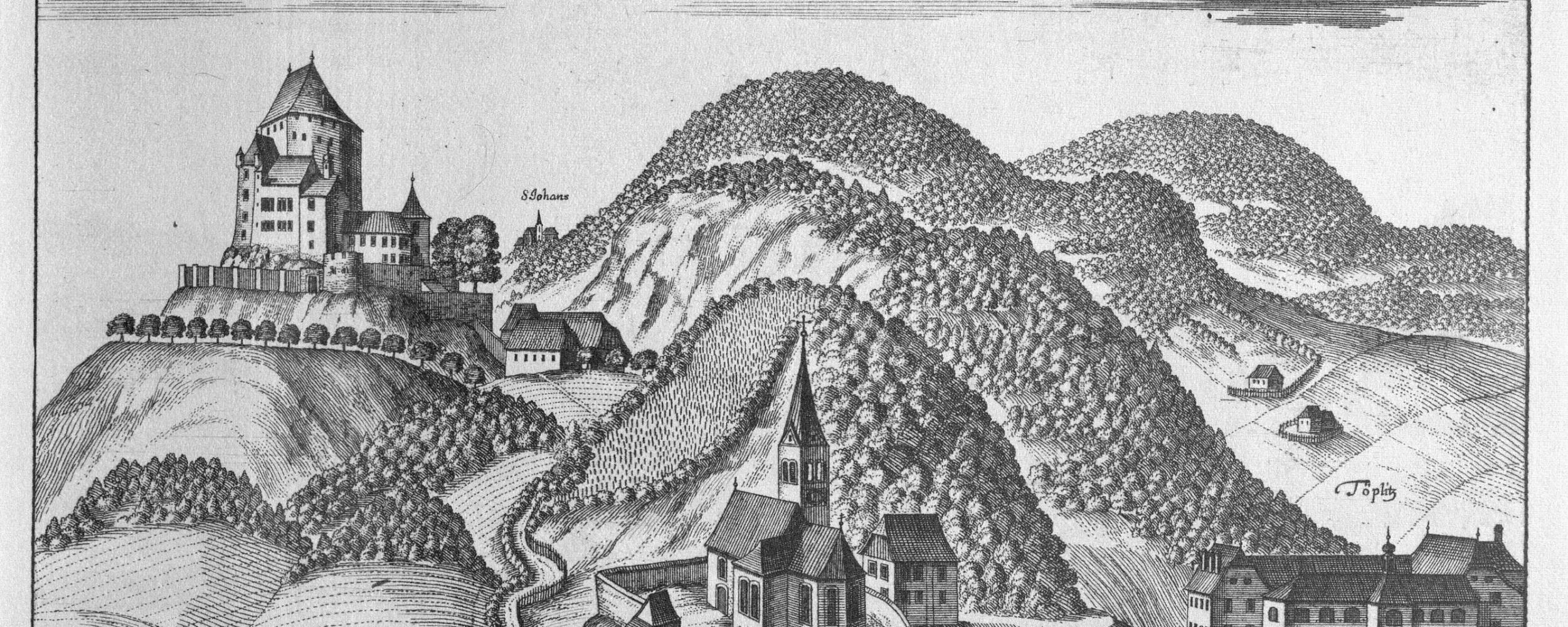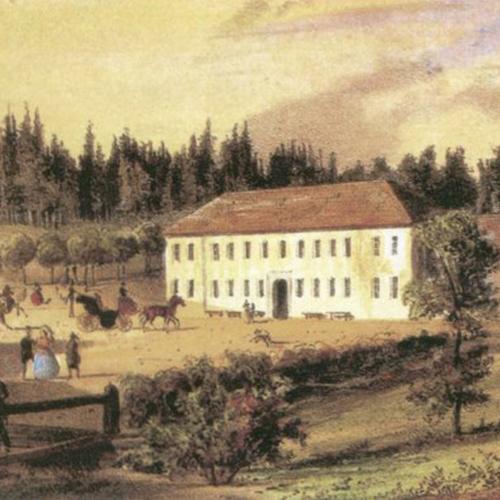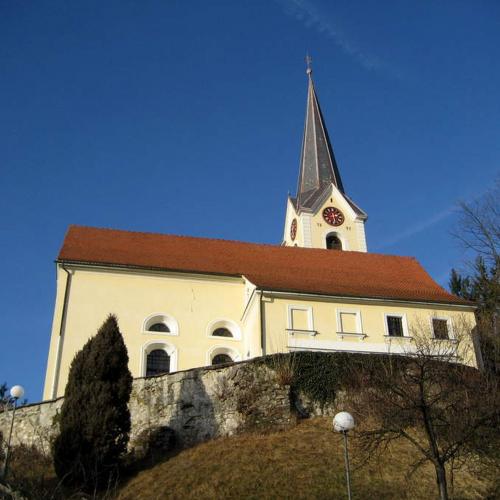Historic attractions
How Dobrna’s barons lived
Experience the beginnings of the spa location and Dobrna as it was at the time of its Dobrna noblemen from beginning of the 13th century; visit their castles, mansions and villas, and see how they lived, where flour was ground for them and where they cooled their drinks.
THERMAL SPRING
Dobrna’s medicinal thermal water was already renowned by the Celts and Romans, as witnessed by findings from that period. Slovenian settlers also knew about it, as they named the upper part of the location Toplice (Spa). The first official written records about Dobrna’s spas and thermal spring date back to 1403.
The preserved spring is housed in the oldest building, the Spa Centre. Mineral rich thermal water springs from a depth of 1200 metres.
Water runs directly from the collecting spring to 12 marble baths, which have been preserved in their original shape from 1874, and represent an attraction worth stopping by for. Swimming in thermal baths offers genuine relaxation and health maintenance; as the water coats your body, its small air bubbles refresh and its thermal effect relaxes and heals, leaving your skin silky soft.
Our thermal water is also suitable for drinking.
Trail description
| Trail description |
The Spa Centre with its thermal spring is situated at the end of the spa park next to Hotel Park. You can visit the spring every day whilst the thermal bath is open.
SNAKE CASTLE
From the remains of these ruins, only a very strong imagination can now conjure what castle life was like in what was the seat of the Dobrna County for centuries. It was built before the year 1257 on a hillock above the Lokovina settlement. The castle lords were changing in the castle until 1772 when an earthquake severely damaged it, and it became unsafe for occupation. Locally it is known as Kačji grad (Snake castle) after a former owner Matija Gačnik, who resided there in the 17th century.
Trail description
| Trail description |
From in front of the Hotel Vita you make your way towards the centre of Dobrna where at the roundabout you turn right and continue along the road past the restaurant 3glav and the bus stop, to the turning where you turn right in the direction of Lokovina. You continue along a slightly ascending asphalt road and on the third junction turn left. Before you a view on the nearby hillock is opened where the ruins of the once mighty ‘Snake castle’ stand. The asphalt road takes you as far as the bottom of the hill. Afterwards just follow the signs.
CASTLE “NOVI GRAD”
The mansion Novi grad (New castle) manor house, once known as Neuhaus has a rich past. The owner Franc Ksaverij Dienersberg built Novi grad in the plane under Kačjek. While the mansion has no particular style, it is surrounded by a beautiful park and is worth a look. In front of it stands an antique lion brought from the castle Ranšperg. In the second half of the 19th century a small tower and wooden ornamentation were added. After the war, the building was used as an orphanage for war orphans; today it holds the Dobrna institute for qualification and safety.
Trail description
| Trail description |
From in front of the Hotel Vita you make your way towards the centre of Dobrna where at the roundabout you turn right and continue along the road past the restaurant 3glav and the bus stop, to the turning. In front of you a beautiful park and the edifice of the Novi grad is already unveiled. Nearby the mansion several old commercial buildings are still preserved.
DOBRNICA MANSION - GUTENEK
It was built in the 17th century as a might yet simple mansion. It then changed several owners. In the year 1851 it was sold to the count Franc Anton Kolovrat Liebstein, who reorganised it into a brewery, one of the oldest in Slovenia. Not far away, in a rocky sheer slope, he enlarged and changed a natural limestone cave into a cooler and beer storage.
Trail description
| Trail description |
From in front of the Hotel Vita you make your way towards the centre of Dobrna where at the roundabout you turn left and continue past the stone entry into the park of former Villa Ružička. At the bridge over the Dobrnica stream, you turn left and keep on the ‘Hudičev graben’. After 30 minutes at a moderate walking speed you will be greeted by the once mighty Dobrnica mansion.
VALLEY OF MILLS
The Valley of Mills is situated under Temnjak hill, where seven mills used to operate, grinding for domestic need and to earn some extra money.
Upper Vovko Mill, which is more than 450 years old, is the best preserved. In the past, it ground grain for Dobrna’s noblemen from Kačji Castle. The mill, renovated in 2007, mostly consists of wood, with well preserved towers, which is rare in Slovenia, as only one other exists.
Trail description
| Trail description |
Start the trail from the centre of Dobrna and head towards Celje, turning right at the crossroad towards Novi grad estate, where the road leads to the preserved ruins of Kačji Castle, then on the asphalt road to Temnjaški spring’s mills; you find Vovko Mill to the north of the residential building at Lokovina 36 on the right bank of the stream. The mill’s owners will show you its interior upon prior arrangement.
At Vovk Farm, go upstream and follow the forest path to Loka. For your return journey, you can choose either the asphalt road through the forest to Božnik Farm and to the Spa Centre, or take the forest path from Čerjak Farm towards Klanc and Dobrna.
Contact
| Contact |
Vovkov mlin
T: +386 35 890 194
LEDENICA CAVE
Not far from Gutenek Mansion, Dobrnica’s mansion, towards Hudičev graben, you find Ledenica Cave, which used to be called Bierkeller; just follow the road signs, its easily found. In the distant past, the natural limestone cave on the rocky slope was extended and turned into an ice storage chamber for cooling Dobrnica Mansion’s brewery’s beer; later, it served as a drinks storage and cooling room. In the winter months, people stored ice obtained from nearby fish ponds in it, which did not melt until the end of the summer.
Trail description
| Trail description |
In front of Hotel Vita, head towards the centre of Dobrna; at the roundabout, turn left and continue along the main road towards Hudičev graben; at the intersection for Klanc and Zavrh, you pass Dobrnica Mansion, from where you continue to the signpost for Ledenica Cave.
MARIA’S CHURCH
Today, this is the central sacral object of Dobrna, once it was the destination of pilgrims from near and far. It was built over the ruins of the old church in the year 1844, in the baroque style, which was still preserved in the countryside well into the first half of the previous century. The church vaults are covered in frescoes of Tomaž Fanton. While in the church three marble tombstones are preserved, among them as well the tombstones of Matija and Margaret Gačnik, descended from the Dobrna lords that are even today a symbol of the former bloom and value. The gilded statue of Maria’s assumption in the niche behind the large altar is from the year 1740, from the old church. Another interesting sight is the wing altar from the former castle chapel, and while it is not wholly an original work, it is decorated with original paintings of the saints from the 15th century.
Trail description
| Trail description |
A magnificent view of the Church of Mary extends from the pool complex at the Vita Hotel. For a short walk, the path to the Church of the Assumption is very convenient.
ST. NICOLAS CHURCH
Its origin is late gothic, and it was first mentioned in the sources in the year 1567. Specialists estimated it even older, and placed it at the beginning of the 16th century. The church has survived Turkish invasions and the Protestantism. Even from outside, the tombstone relief to the roman soldier Aurelio Victor of the second Italian legion from the third century, which is built in to its south side surprises us.
The renaissance statue of St. Nicholas from the 16th century in the belfry niche, the large altar in the presbytery from the first half of the 18th century, and no less the altar to St. Francis Ksaver from the year 1770 in the chapel painted with frescoes from the saint’s life, all surprise us. The third altar is from the previous century. The church has exceptionally beautiful baroque candlesticks and the crucifixion path in oil equipped with inscriptions in old Slovenian. The church of Saint Nicholas is the most beautiful cultural-artistic monument in the Dobrna countryside. The roof, belfry, and the exterior were renovated in the year 1987.
Trail description
| Trail description |
From in front of the Hotel Vita you make your way towards the centre of Dobrna where at the roundabout you turn left and continue past the stone entry into the park of former Villa Ružička. On the bridge over the Dobrnica stream you already face a view of the church of Saint Nicholas. The way continues straight along the road, ascending slowly to the top, from where a view, of the Dobrna valley and the hills surrounding Socka and Vitanje, spreads out.


















